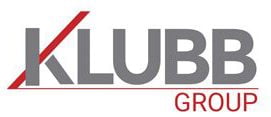The Provision and Use of Work Equipment Regulations (PUWER) place duties on people and companies who own, operate, or have control over work equipment. PUWER also places responsibilities on businesses and organisations whose employees use work equipment, whether owned by them or not.
PUWER requires that equipment provided for use at work is:
- suitable for the intended use
- safe for use, maintained in a safe condition, and inspected to ensure it is correctly installed and does not subsequently deteriorate
- used only by people who have received adequate information, instruction, and training
- accompanied by suitable health and safety measures, such as protective devices and controls. These will normally include guarding, emergency stop devices, adequate means of isolation from sources of energy, clearly visible markings, and warning devices
- used in accordance with specific requirements for mobile work equipment and power presses
Some work equipment is subject to other health and safety legislation in addition to PUWER. For example, hoists must also meet the requirements of the Lifting Operations and Lifting Equipment Regulations 1998 (LOLER), pressure equipment must meet the Pressure Systems Safety Regulations, and personal protective equipment must meet the PPE Regulations.
What is work equipment?
Work equipment is any machinery, appliance, apparatus, tool, or installation for use at work (whether exclusively or not). This includes equipment that employees provide for their own use at work. The scope of work equipment is therefore extremely wide. The use of work equipment is also very widely interpreted and ‘…means any activity involving work equipment and includes starting, stopping, programming, setting, transporting, repairing, modifying, maintaining, servicing, and cleaning’.

What you must do
If your business or organisation uses work equipment or is involved in providing work equipment for others to use (e.g., for hire), you must manage the risks from that equipment. This means you must:
- ensure the equipment is constructed or adapted to be suitable for the purpose it is used or provided for
- take account of the working conditions and health and safety risks in the workplace when selecting work equipment
- ensure work equipment is only used for suitable purposes
- ensure work equipment is maintained in an efficient state, in efficient working order, and in good repair
- where a machine has a maintenance log, keep this up to date
- where the safety of work equipment depends on the manner of installation, it must be inspected after installation and before being put into use
- where work equipment is exposed to deteriorating conditions liable to result in dangerous situations, it must be inspected to ensure faults are detected in good time so the risk to health and safety is managed
- ensure that all people using, supervising, or managing the use of work equipment are provided with adequate, clear health and safety information. This will include, where necessary, written instructions on its use and suitable equipment markings and warnings
- ensure that all people who use, supervise, or manage the use of work equipment have received adequate training, which should include the correct use of the equipment, the risks that may arise from its use, and the precautions to take
- where the use of work equipment is likely to involve a specific risk to health and safety (e.g., woodworking machines), ensure that the use of the equipment is restricted to those people trained and appointed to use it
- take effective measures to prevent access to dangerous parts of machinery. This will normally be by fixed guarding, but where routine access is needed, interlocked guards (sometimes with guard locking) may be needed to stop the movement of dangerous parts before a person can reach the danger zone. Where this is not possible, such as with the blade of a circular saw, it must be protected as far as possible and a safe system of work used. These protective measures should follow the hierarchy laid down in PUWER regulation 11(2) and the PUWER Approved Code of Practice and guidance or, for woodworking machinery, the Safe use of woodworking machinery: Approved Code of Practice and guidance
- take measures to prevent or control the risks to people from parts and substances falling or being ejected from work equipment, or the rupture or disintegration of work equipment
- ensure that the risks from very hot or cold temperatures from the work equipment or the material being processed or used are managed to prevent injury
- ensure that work equipment is provided with appropriately identified controls for starting, stopping, and controlling it, and that these control systems are safe
- where appropriate, provide suitable means of isolating work equipment from all power sources (including electric, hydraulic, pneumatic, and gravitational energy)
- ensure work equipment is stabilised by clamping or otherwise to avoid injury
- take appropriate measures to ensure maintenance operations on work equipment can be carried out safely while the equipment is shut down, without exposing people undertaking maintenance operations to risks to their health and safety
When providing new work equipment for use at work, you must ensure it conforms with the essential requirements of any relevant product supply law (for new machinery, this means the Supply of Machinery (Safety) Regulations). You must check it:
- has appropriate conformity marking and is labelled with the manufacturer’s details
- comes with a Declaration of Conformity
- is provided with instructions in English
- is free from obvious defects – and that it remains so during its working life
When providing mobile work equipment, you must ensure that:
- where employees are carried, the equipment is suitable for that purpose
- the risks from rolling over are minimised, and any person being carried is protected in the event of a fall or rollover. This should include protection against crushing, through the provision of a suitable restraint and a rollover protection system
- self-propelled equipment can be controlled safely with braking devices, adequate driver vision, and, where necessary, lighting
- measures are taken to prevent any risks from drive shafts that power accessories attached to mobile work equipment, by using adequate guards
When providing power presses for working on cold metal, you must thoroughly examine them and their safeguards before first putting them into use, and periodically afterward. This means you must ensure that the inspection and testing of guards and protection devices are carried out by a competent person at frequent intervals, and that records of these examinations, inspections, and tests are kept.
What you should know
The Provision and Use of Work Equipment Regulations 1998 replaced the original PUWER regulations first introduced in 1992. The main change was in the coverage of mobile work equipment, woodworking equipment, and power presses, allowing the repeal of the 1965 Power Press Regulations and a number of other older regulations, including those on woodworking machinery.
The Provision and Use of Work Equipment Regulations 1998, as amended by the Health and Safety (Miscellaneous Amendment) Regulations 2002, are supported by an Approved Code of Practice (ACOP) and additional free guidance which are readily available from HSE. Other ACOPs that support PUWER are also available, covering woodworking machinery and power presses for working on cold metal. Where work equipment is also lifting equipment, there is another ACOP supporting LOLER and PUWER.
While the ACOPs are not law, they were made under section 16 of the Health and Safety at Work Act (HSW Act) and so have a special status, as outlined in the introduction to the PUWER ACOP:
“Following the guidance is not compulsory and you are free to take other action. But if you do follow the guidance you will normally be doing enough to comply with the law. Health and safety inspectors seek to secure obedience with the law and may refer to this guidance as illustrating good practice.”
These ACOPs support PUWER and the general provisions of section 2 of the HSW Act, as well as other regulations, including the Management of Health and Safety at Work Regulations and the Workplace (Health, Safety, and Welfare) Regulations.
Other more specific legislation may also apply (for example LOLER, when hoist is used at work). In some cases, equipment used at work is more appropriately covered by other, more specific legislation (e.g., the Personal Protective Equipment Regulations and the Electricity at Work Regulations). You may therefore have to ensure that the requirements of other legislation are met alongside those of PUWER; for example, the Workplace (Health, Safety, and Welfare) Regulations, in relation to the workplace risks to pedestrians arising from mobile work equipment.
Although PUWER has a wide application, there is a general exclusion covering the use of ship’s work equipment in most situations because there are other conditions for the safety of this equipment under merchant shipping legislation.
Most new work equipment that is machinery will also fall within the scope of the Supply of Machinery (Safety) Regulations 2008. Machinery, and certain other work equipment within the scope of these Regulations, must undergo conformity assessment and have appropriate conformity marking and be correctly labelled before being placed on the market or brought into use. This includes:
- machinery which needs to be installed on / with other equipment or in a structure before it can be used
- safety components placed independently on the market
- lifting equipment/accessories
Partly completed machinery (components which are almost machinery but which cannot themselves perform a specific function) also come within the scope of the Supply of Machinery (Safety) Regulations 2008. These must come with comprehensive instructions for safe incorporation and a Declaration of Incorporation.
Employer’s policy
Employer have a duty to ensure that all workers are aware of the need for compliance with PUWER and LOLER, and that they are trained appropriately through courses and other required policies. This awareness is important to maintain safety and legal compliance in the workplace.
Employer must implement comprehensive training programs that cover all aspects of work equipment usage, including the specific risks associated with each type of equipment, and the measures necessary to mitigate these risks.
Training courses should be thorough and tailored to the specific needs of the workplace, ensuring that people understand the importance of using equipment correctly and safely. These courses should include practical demonstrations, written instructions, and regular assessments to ensure that the necessary knowledge and skills is retained. Moreover, employers should develop clear and concise policies that outline the procedures for the safe use, maintenance, and inspection of work equipment.
Awareness campaigns can further reinforce the importance of safety and compliance. Regular safety meetings, posters, and reminders about the key aspects of PUWER and LOLER can help keep safety at the forefront of employees’ minds. Employers should also foster a culture of safety where workers feel comfortable reporting any concerns or issues with work equipment, and where such reports are taken seriously and acted upon promptly.
It’s important for employers to understand that ensuring compliance is not just about avoiding legal penalties, but about protecting the health and safety of their workforce. By investing in robust training course and awareness programs, employers can reduce the risk of accidents and injuries, improve overall productivity, and create a safer, more positive working environment.
Regular audits and reviews of equipment and safety procedures should be conducted to ensure ongoing compliance with PUWER and LOLER policy. This includes keeping maintenance logs up to date, ensuring all safety devices are functioning correctly, and verifying that all new equipment meets the necessary safety standards before it is put into use.






